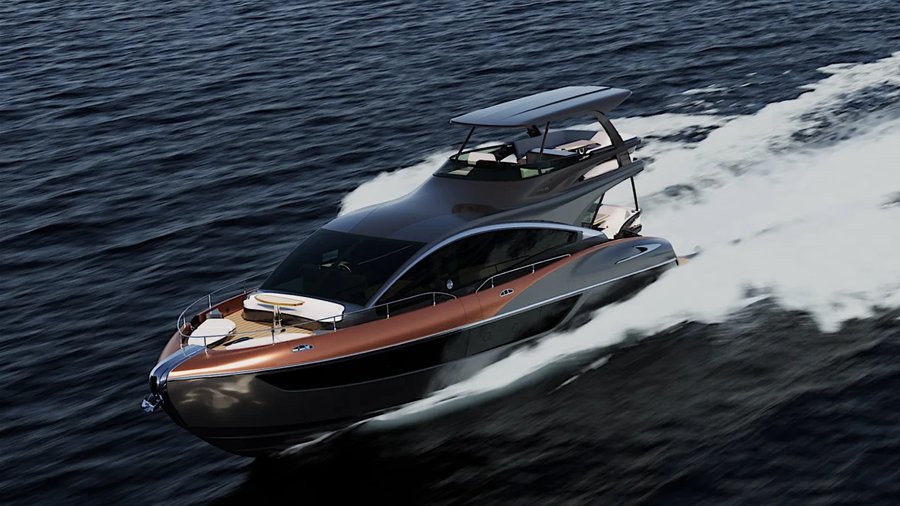Lexus LY 680 pushes Lexus' lifestyle aspirations further out to sea

Toyota isn't new to the boat business, the Toyota Marine division putting aquatic products out to sea since 1997 under the Ponam brand. In 2019, Lexus hit the water with the LY 650 luxury yacht, "a new embodiment of Lexus' challenge to go beyond the automobile to deliver innovative and amazing experiences." Built by Wisconsin-based Marquis Yachts, the LY 650 bore similar lines to Marquis' 630 Sport Yacht or 65, the Lexus yacht's stylized lines and interior designed by Italian outfit Nuvolari Lenard. A refresh for that first effort results in the LY 680, which adds 55 inches to the length of the flybridge, making more room for the lounge sofa and barbecue, and 27.6 inches to the swimming platform in back. Overall length grows to 67.8 feet.
The other important specs are common to the two watercraft, including the beam of 18 feet 11 inches, three decks, the interior design with the three staterooms sleeping six, the ability to host 15 people in comfort, 226 gallons of fresh water stowed below, and a 1,060-gallon fuel tank.
Unlike the LY 650, which debuted in Boca Raton, Florida, and was built in Wisconsin, the LY 680 is for the Japanese market; it's said Lexus sold four examples of the LY 650 before ending production. LY 680 builds have been outsourced to Taiwanese yacht builders Horizon Group.
The LY 680 offers two engine options, twin Volvo Penta IPS 12.8-liter inline-six inboards that make either 789 hp or 986 hp apiece, eliminating the middle 887-hp option the LY 650 offered. With the Volvo Pentas rated at 50 gallons per hour, running both engines full-bore would still give the captain about 10 hours to reach the next port.
Toyota Marine is now accepting orders for the LY 680, but only in Japan, with other markets "considered in the future based on customer demand." It costs 770 million yen, or $5.1 million USD. First deliveries are scheduled for 2026.
Related News
